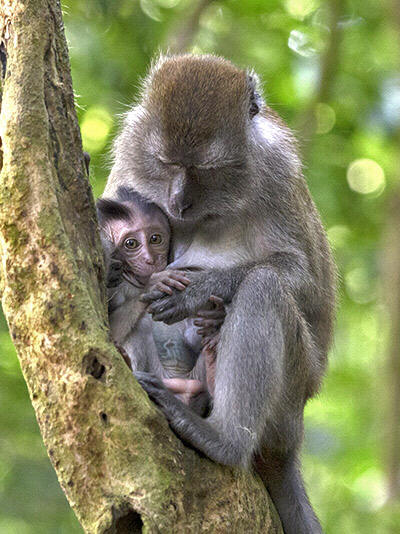
Fig 1
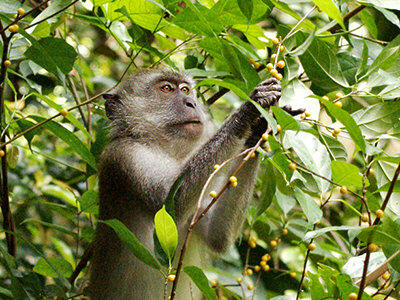
Fig 2
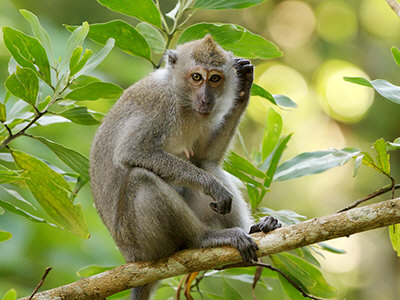
Fig 3
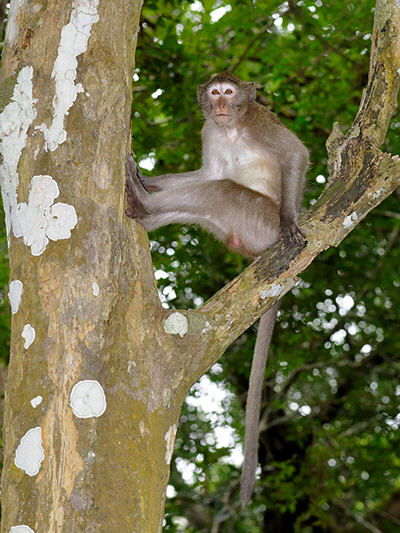
Fig 4
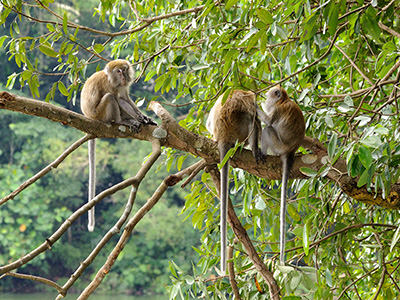
Fig 5
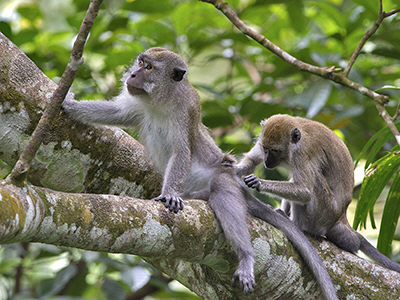
Fig 6
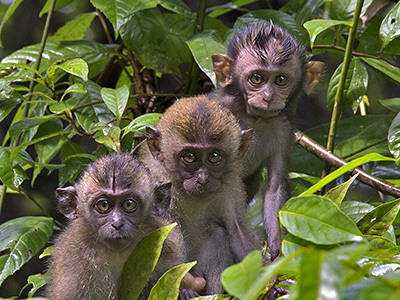
Fig 7
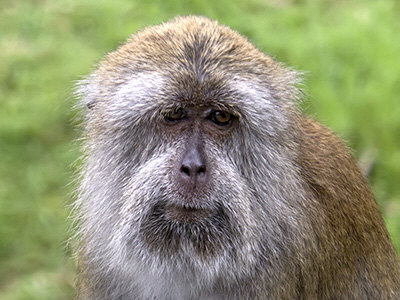
Fig 8
|
Order : PRIMATES
Family : Cercopithecidae
Species : Macaca fascicularis
Head-body length : 40-47 cm
Tail length : 50-60 cm
Weight, male : 5-7 kg
Weight, female : 3-4 kg
Play alarm call
►
Probably the most
successful primate species in Southeast Asia (besides Homo sapiens), the
Long-tailed Macaque is to be found in a wide range of habitats including
primary and secondary forest, mangroves, plantations and the outskirts of
towns and villages. Its success is largely due to a varied diet of fruits,
leaves, small mammals and birds, shellfish and crabs, as well as human
leftovers.
It can be
identified by the length of its tail, by the shape of the muzzle, and its
colour, which is generally grey-brown or reddish-brown. It has a noisy,
aggressive temperament and sometimes travels in large troupes of up to 30.
The species ranges from Indochina, Southern Thailand
and Peninsular Malaysia to Sumatra, Java, Borneo and the Philippines. In
Singapore it is the commonest primate.
Fig 1 : Female with young at Lower Peirce Forest, Singapore.
Fig 2 : Feeding on ripe figs of Ficus chartacea, at the edge of Bukit
Timah forest, Singapore.
Fig 3 : Female at Langkawi, Peninsular Malaysia.
Fig 4 :
Young adult male at Siem Reap, Cambodia.
Fig 5 : Trio of young adults at Macritchie, Singapore.
Fig 6 : Young adults grooming at Gunung Pulai, Johor, Peninsular Malaysia.
Fig 7 : These 3 juvenile macaques like to stick close together.
Fig 8 : Example from Pulau Pinang, Peninsular Malaysia with unusually long
fur.
References :
Francis, C.M., 2001. Mammals of South-east Asia. New Holland.
Payne, J., Francis, C.M., 1998. A Field Guide to the Mammals of
Borneo. The Sabah Society. |